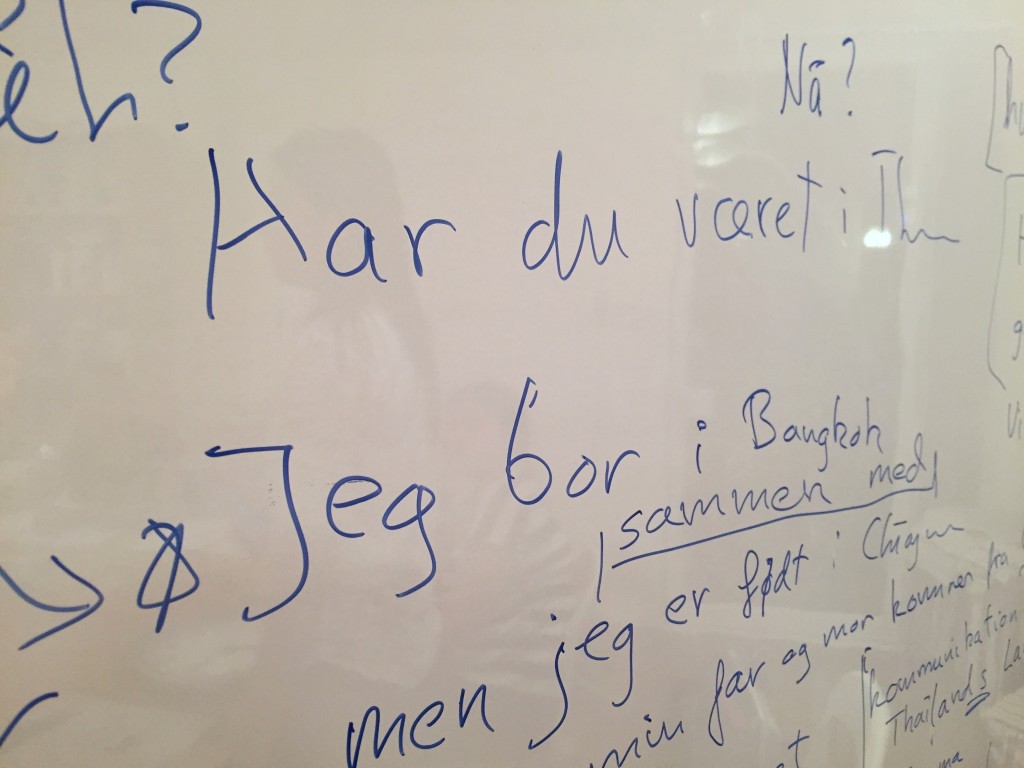
Every Tuesday evening a conference room at Mermaid Hotel in Bangkok is turned into a classroom where excited Thais challenge themselves to pronounce the Danish letters ”Æ, Ø, Å”.
Rød..Rød grød med fløde. Vi er røøøøde … vi er hviiide”.
In the cool wind of an aggressive aircon next to a whiteboard stands their teacher, Gregers Moller, the editor in chief at ScandMedia.
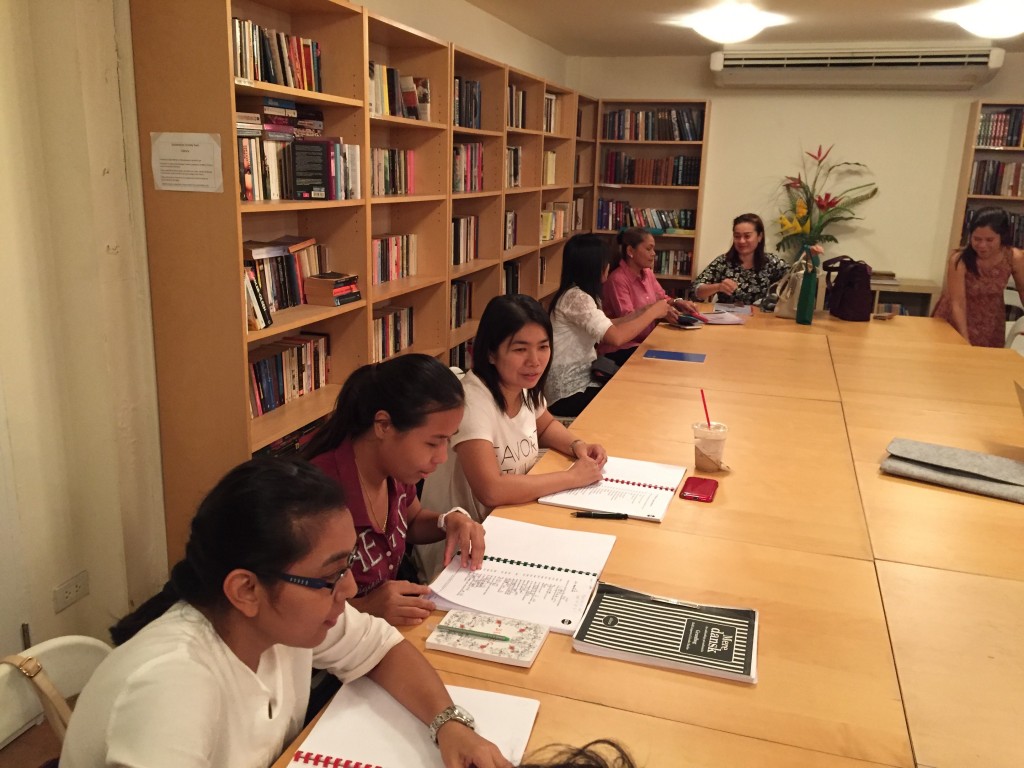
After he attended the Danes Worldwide meeting on 7 October 2015 it was clear to him that many Thais and Danish-Thais wanted to learn to speak Danish, but no help was found. Since the beginning of 2015 Danish language lessons have been non-existing due to the former Danish teachers’ respectively retirement and declared bankrupt.
“The need is there, but the teachers are not,” says Gregers Moller.
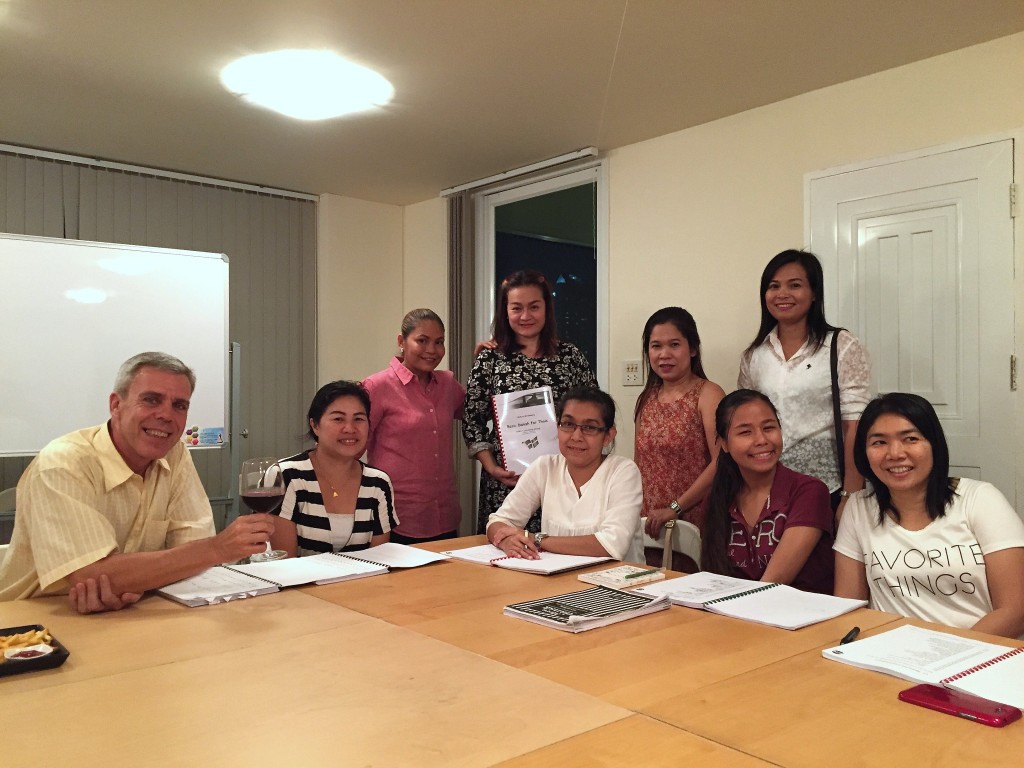
When you can’t find a teacher, you have to be one yourself. Gregers Moller decided to solve the problem by voluntaring with weekly Danish language lessons.
“At least the opportunity should be there for whose who want to learn,” he says.
Curious Thais continue to enter the class room, and even a waiter drops in to serve Gregers a sandwich and a glass of red wine.
“It’s important too to learn about Danish food culture,” smiles Gregers Moller before he begins his dinner. He takes up the sandwich and looks at his students.
“When I put this into my mouth I will take a ‘bid’. Biiiiiid”,” he says. The students laugh and repeat the difficult Danish pronouncement of the ”soft letter d” [ð].
“Biiiiid.”
Per Teglborg, a retired Bangkok-based research librarian, is attending the class for his second time to offer his help. He greets the students and shakes their hands in Danish costume. He agrees on Gregers Moller’s point of implementing culture into language courses.
“When you learn to speak a new language, you also have to learn about the country where the language is spoken and its norms. Here we teach the students to say “Goddag” and give each other a handshake instead of greeting “Sawasdee” with folded hands,” Per Teglborg explains.
On the table lies retro Danish school books, Anders And-magazines and good old “Søren og Mette” (a very beloved childrens’ book series in Denmark). In front of every single student lies a thick copy of a Danish education book from the former Danish language school, which closed down more 10 months ago. But the books still remains, and so does the need for education.
Today they are learning Danish numbers.
The hard thing about Danish numbers is reverse word order. For example: number 28. Instead of putting “twenty” in the beginning of the word, Danish language requires to put the “twenty” in the end. Directly translated “twenty-eight” becomes “eight-n-twenty” in Danish.
“Det er meget svært (=It is very hard”, says student Lalita Poonsin in almost perfect Danish accent. This is her fifth time attending the language classes, and even if Gregers Moller is no educated teacher, she believes he is a devoted educator and “meget, meget god”.
“(translated to English:) Gregers Moller makes an excellent teacher. He is very patience and give us time to pronounce the words correctly. He cares very much about the details, and I feel he really wants us to learn to speak Danish perfectly,” Lalita Poonsin says.
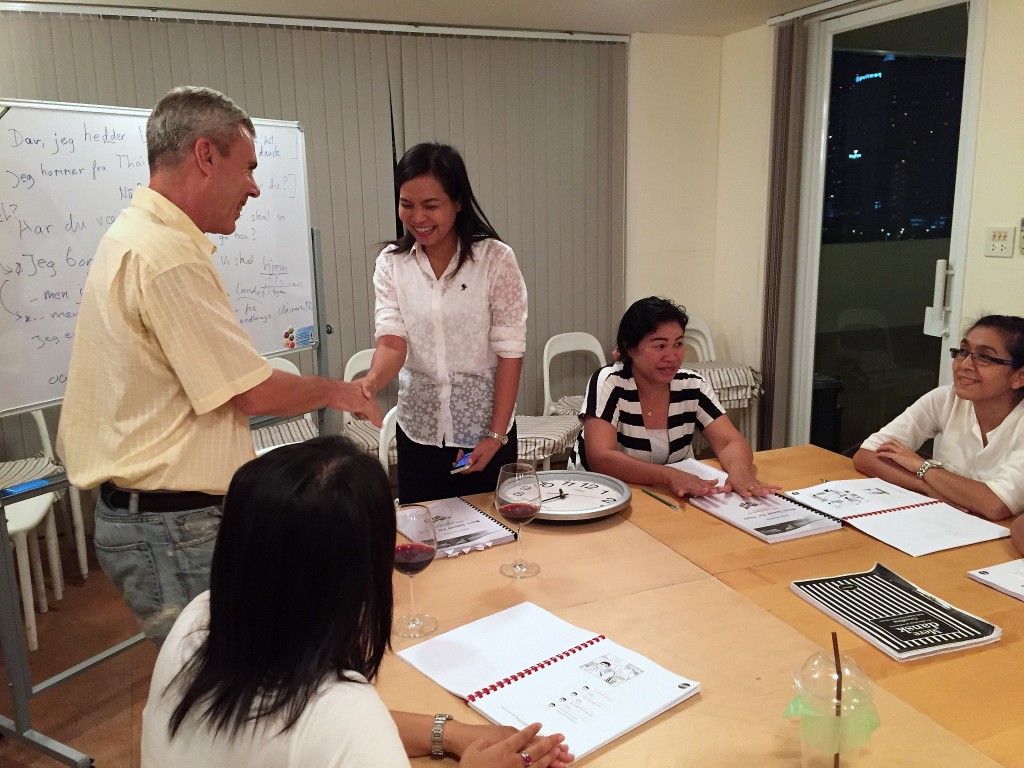
“That was the numbers,” Gregers Moller says. “Today we will also learn ”klokken” (=time). Gregers is holding a big wall clock and points to different hours. The students look serious, but relaxed at the same time. Four of the girls have already acquired the teachers special custom and have brought wine with them to class. They are all eager to learn and their fingers scribble down notes simultaneously as they say in chorus “klokken er kvart over 10 (=it’s 22.15pm)”.
The students are very happy to attend the Danish classes. The youngest being 22 years old and the oldest over 50, they all have in common the desire to learn to speak Danish. The weekly class begins 6pm-10pm, and the evening hours are spend with productivity. It’s up to the individual to decide how much work they will put into these classes, and, obviously, they all want to give it all. There is often a very serious reason why they want to speak Danish: so they can speak to their loved ones.
“Jeg vil lære dansk, så jeg kan snakke med min søn (=I want to be able to speak Danish so I can have a conversation with my son”),” says Lalita Poonsin. Her son does not speak Thai, and Lalita studies hard to improve her language skills, so she can be able to have conversations with him. Therefore these language lessons are extremely important to her.
Homework are given to them every week, and for today they have been practicing how to present themselves in Danish.
Gregers Moller switches to teach them as a group and as smaller groups. After half an hour the forgotten club sandwich and the full glass of red wine proves how busy their teacher is.
The Thais are good students, and they are not afraid to ask for help. Not even in Danish.
“Kan du hjælpe mig nu? (=Can you help me now?),” they ask.
Gregers Moller is more than happy to help.
Being both the editor in chief for the biggest Scandinavian magazine in Southeast Asia, running a boutique resort and being the owner of Scandshop, one would think Gregers Moller’s weekly schedule was already packed – and, it is. However, he believes there is always space for helping others. His wife Dao Yatprom encouraged him to provide this service after the Danish Meeting held in Bangkok in October 2015. Every Dane or Danish-related knew they needed Danish lessons, and the idea of teaching Danish had already occurred to Gregers Moller before. But when he understood that a lot of children had problems communicating with their parents in Danish or parents not understanding their children he just moved ahead and did it. The opportunity to learn to speak the Danish language would be a wish come true for many Thais.
“I felt my plate was already full, but then again, I know the need is there and I am more than glad to help. And as long I can combine it all with a class of red wine on a Tuesday, I have nothing to complain about,” he smiles.
The classes are held every Tuesday from 6pm at Mermaid Hotel Sukhumvit soi 29. Everyone is welcomed to drop in, and the classes are free.

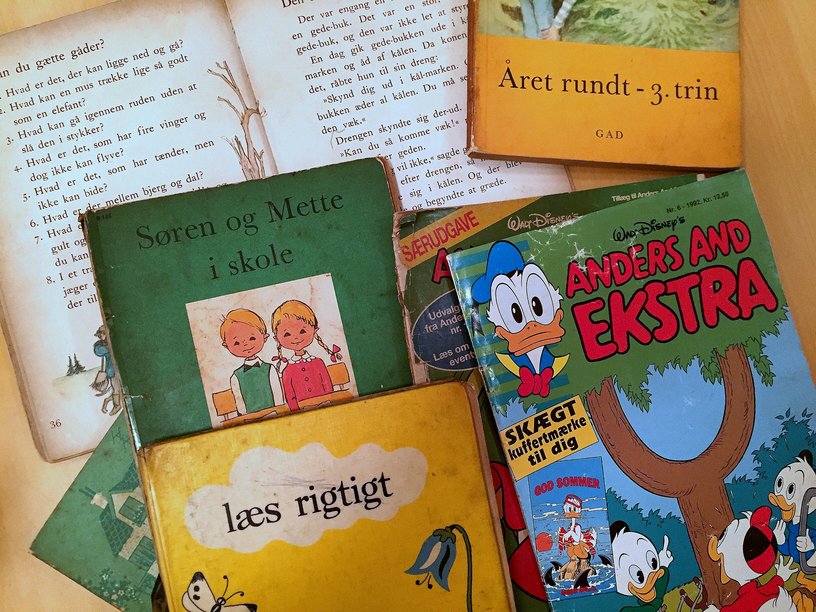
I wanna help and teach in danish, any ideas of how to start or where to go ?
Clyde is absolutely right. Countless Thai’s have gone through Clyde Haumann’s professional language course in Pranburi prior to moving to Denmark for a fast track integration. But in Bangkok, since Holger Jensen retired and Piro by the end of last year closed down, there has been a vacuum. Work is under way to employ a new teacher who will be replacing the role Holger Jensen had – and when that solution is in place then the grown-ups will be transferred there and of course pay for a professional education.
Great to know Gregers are taking up teaching but to claim that the possibility of learning Danish in Thailand due to bankruptcy and retirement has been non existent up to now is absolutely not true.
I teach Danish at a professional level at our school here in Pranburi and have been doing so ever since I stopped teaching at Thai Integration in Bangkok. Our lessons are of course not free since there are certain requirement to be met when you run an authorized institution.